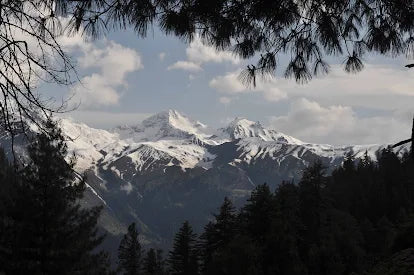Climate-Related Disasters in Himachal Pradesh: A Looming Challenge
Nestled amidst the majestic Himalayan ranges, Himachal Pradesh is a land of unparalleled natural beauty. However, this picturesque state also grapples with the adverse impacts of climate change, manifesting in a series of climate-related disasters such as flash floods, landslides, and more. In this article, we delve into the challenges posed by these disasters, explore case studies, and shed light on the climate-related reforms undertaken in Himachal Pradesh.
Understanding Himachal Pradesh's Vulnerability
Himachal Pradesh's unique geography, with its steep slopes and fragile ecosystems, makes it susceptible to climate-related disasters. Here are some key insights into the climate challenges faced by the state:
1. Flash Floods
Himachal Pradesh is no stranger to flash floods, which occur primarily during the monsoon season. The state's numerous rivers and their tributaries often swell with heavy rainfall, leading to sudden and devastating floods. The flash floods in Kullu and Manali in 2019 left a trail of destruction, highlighting the vulnerability of the region.
2. Landslides
The hilly terrain of Himachal Pradesh is prone to landslides, especially during the rainy season. Landslides not only disrupt transportation but also pose a significant threat to human settlements. A prominent example is the 2017 landslide in Mandi district, which resulted in tragic loss of life and property.
3. Glacial Lake Outburst Floods (GLOFs)
As global temperatures rise, glacial retreat in the Himalayas has become a growing concern. Melting glaciers can lead to the formation of glacial lakes, and in some cases, the sudden release of water from these lakes can trigger GLOFs. Himachal Pradesh is at risk, with several glacial lakes identified as potential hazards.
Case Studies: Climate Disasters in Himachal Pradesh
Kullu Flash Floods (2019)
In July 2019, incessant rainfall led to flash floods in Kullu and Manali. The Beas River swelled, causing widespread destruction. Landslides and debris flow added to the chaos. The disaster claimed several lives and caused extensive damage to infrastructure, including roads and bridges.
Mandi Landslide (2017)
One of the deadliest landslides in recent history occurred in August 2017 when a massive landslide hit Mandi district. The landslide buried a 150-meter stretch of the Mandi-Pathankot highway under tons of debris. Tragically, 46 lives were lost in this catastrophe.
Climate-Related Reforms in Himachal Pradesh
Recognizing the urgent need to address climate-related challenges, Himachal Pradesh has initiated various reforms and measures:
1. Climate Action Plans
The state has developed climate action plans to enhance resilience and reduce vulnerabilities. These plans encompass disaster management strategies, afforestation programs, and sustainable land use practices.
2. Early Warning Systems
Efforts have been made to establish early warning systems to alert residents about impending disasters. These systems provide crucial lead time for evacuation and preparedness.
3. Afforestation and Reforestation
Himachal Pradesh has undertaken extensive afforestation and reforestation programs to stabilize slopes, prevent soil erosion, and mitigate landslides. The Greening of Hill Project is a noteworthy endeavor in this regard.
4. Sustainable Agriculture Practices
To adapt to changing climatic conditions, the state promotes sustainable agricultural practices. These include crop diversification, rainwater harvesting, and organic farming methods.
5. Glacial Lake Monitoring
The government is actively monitoring glacial lakes to identify potential threats and take preventive measures. This involves remote sensing and geospatial technology.
The Way Forward
Himachal Pradesh serves as a stark reminder of the climate challenges that mountainous regions face. While proactive measures and reforms are being implemented, there is a pressing need for increased awareness, community engagement, and continued research to combat the impacts of climate change effectively. The state's resilience in the face of these challenges will undoubtedly shape its future and the well-being of its residents amid a changing climate landscape.

